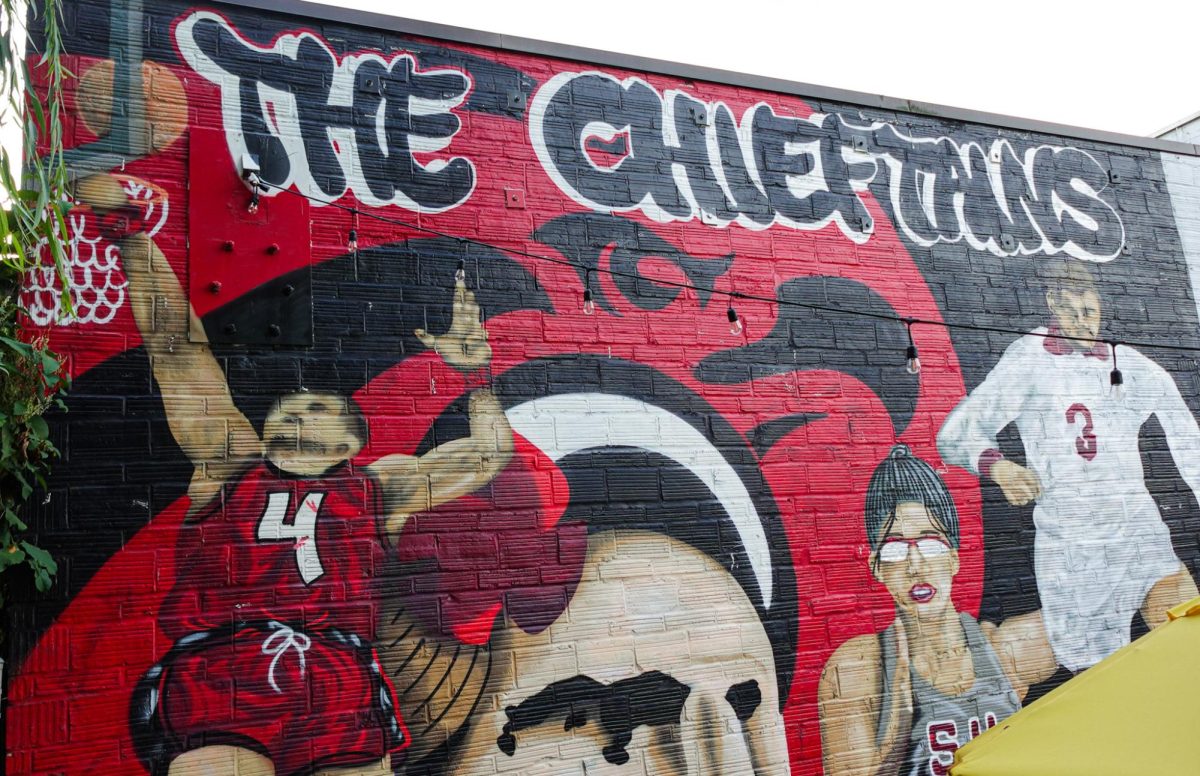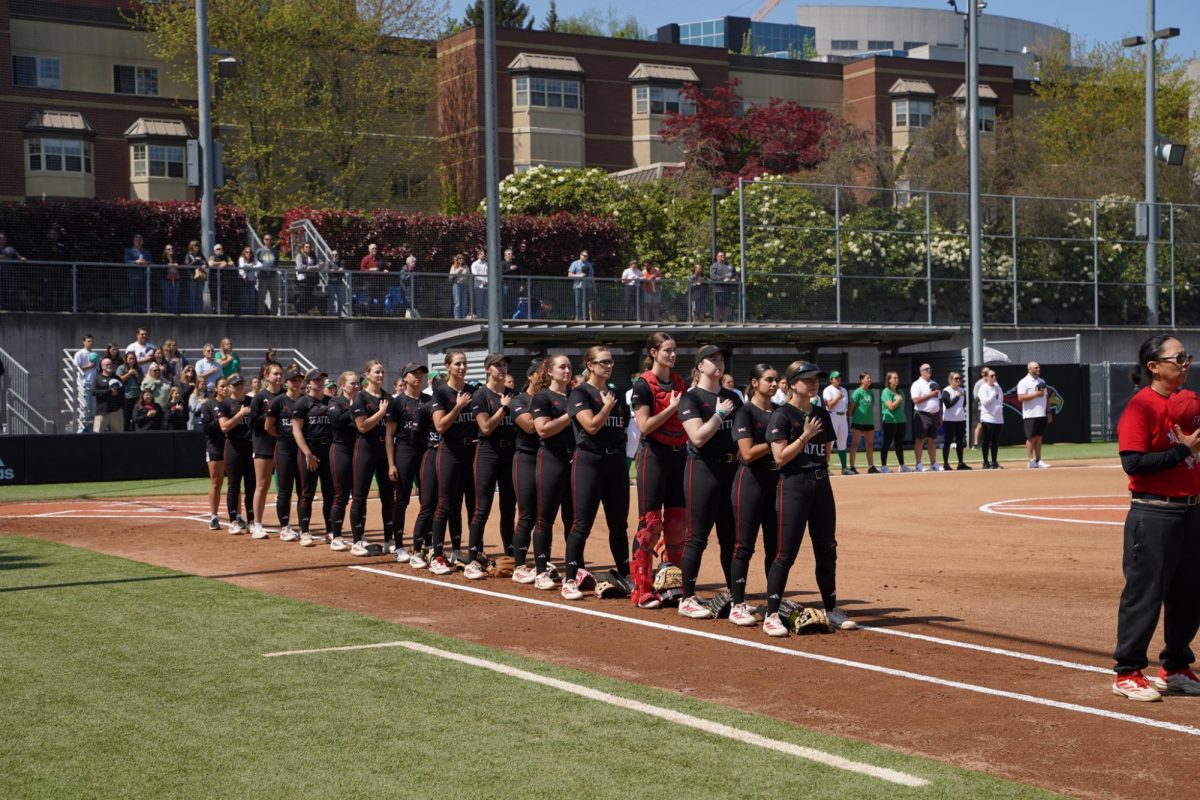Seen at every game, every event and on every piece of merchandise, the Redhawk name is inseparable from Seattle University. For current students, Rudy the Redhawk is the only Seattle U mascot they’ve ever known. However, this wasn’t the case until the year 2000, when our original name, the Chieftains, was officially retired due to concerns over cultural appropriation.
The Chieftain name was adopted in 1938, intended to honor the local native population. However, as many other colleges around the country started to point out in the late 1990s and early 2000s, the practice of majority-white schools using Native American imagery is inherently disrespectful towards those groups and often perpetuates harmful stereotypes.
Jeff Philpott, a recently retired communication and media professor and University Core Curriculum director, worked at Seattle U starting in 1992 and saw these changes happen firsthand.
“My recollection is that in about 1998 and 1999 there started to be some conversations on campus about [the mascot] coming primarily from students,” Philpott said.
These conversations started within the student government and quickly spread throughout the greater student body. The issue was eventually brought to Fr. Steven Sundborg, former Seattle U president and current chancellor, who authorized the creation of a committee to look into a potential mascot change.
“It wasn’t a particularly controversial decision,” Philpott recalled. “I think most of the faculty and students recognized that it was time to do something different.”
The committee was made up of not only students and faculty, but alumni, donors and athletics representatives as well. While the decision to move away from the original mascot was fairly unanimous, there were some lasting emotional ties to the name for former students of the university.
“Alumni tend to care a lot about their school, and sports teams and school spirit are part of what keeps them attached. SU had at one point had a really proud sports tradition, particularly in men’s basketball, as the Chieftains made the national tournament a few times in the ‘50s and ‘60s. There were a lot of alums who really felt some connection to the Chieftains because that’s who they rooted for and still see themselves as part of,” Philpott explained.
Despite the nostalgia that some felt, the committee pushed forward with a strong recommendation to the president to replace the Chieftain name. This placed the university in limbo for a period of time, as the Chieftains had been retired without a replacement in mind. It was decided early on that the new mascot should be an animal or object rather than a group of people in an effort to avoid potential appropriation or stereotyping. According to Philpott, hawks came up early in the conversation along with wolves, raptors, and the names of various weather conditions such as storms and hurricanes.
This decision was made by a second committee, again representing students, faculty and alumni, as well as representatives from local tribes. This work was done fairly quickly and quietly, with the university unveiling its new mascot, the Redhawks, in early 2000. Rudy himself came shortly after.
Today, there are no remnants of the former mascot left on campus.
First-year Biochemistry Major Monroe Redden works as an athletics guest services representative on campus and has observed how popular the mascot is with fans of the university.
“I see people get really excited when Rudy the Redhawk shows up and interacts with fans,” Redden said. “Even when he isn’t there, fans are more than willing to start cheering for anyone with an athlete’s uniform, which all have the Redhawk name shown on them.”
Redden notes that the athletics department has taken great care to ensure that there are no racist remnants of the former name left behind, as well as supporting a positive environment for all students and fans. The new, inoffensive mascot gives fans and teams alike something to be proud of.
“Honestly, I didn’t even know about the change when I came here,” First-year Forensic Psychology Major Courtnie Wilson said. “I’m glad they changed it to something that’s not racially insensitive.”
Wilson’s attitude toward the change reflects that of many students. These conversations remain important, especially considering Seattle U’s progressive image. It’s also important to recognize the work that student advocates put into making this change.
“I think this was a really interesting case where students were leading change,” Philpott remarked. “This was a nice case of students picking up on something that was happening elsewhere and bringing that to campus. They planted seeds that led to a pretty significant change at the university.”
While significant strides have been made in representation and social awareness, it’s still a constant work in progress. The change made to the university mascot is an inspiring display of student advocacy and demonstrates the commitment to social justice that Seattle U claims to value.









Robyn REDDEN
Nov 7, 2024 at 9:56 pm
What an amazing article! Very interesting and well written! Love that you’re keeping those high Moral standards in the athletic department Monroe! Clearly, the school Dedicated to representing Human kindness!
Ricky
Nov 7, 2024 at 9:50 pm
I have NEVER been so proud as to see that name in this article! You know who you are sweetheart! Daddy loves you!